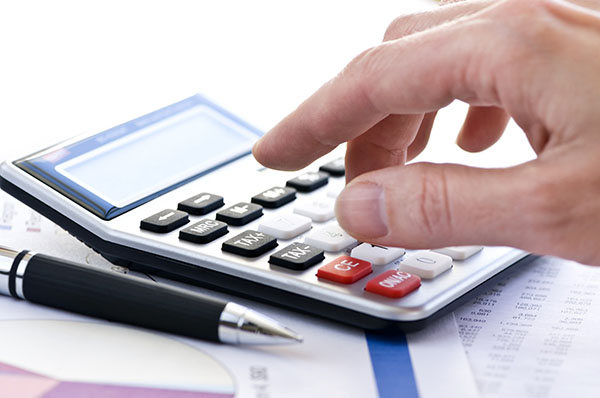Save enough to pay your taxes, and a little more
If you’re self-employed or running a business, it’s important to stay in the black with the Canada Revenue Agency. But how do you determine how much you’ll need to pay your taxes each year?
All things being equal, Stephen McCulloch, CPA, CA, in Pembroke, says certain key pieces of information can give you a reasonable estimate of what you’re likely to owe.
“What you’ve paid in previous years is a better indicator than no indicator at all,” he says. “If your personal circumstances or your business’s performance hasn’t changed substantially, chances are the amount you’ll owe will be roughly similar.
“For self-employed businesspeople, there are many variables, but your overall revenue is a good indicator. I recommend owners save an amount roughly equal to the HST they’ve collected during the period in question, plus a reasonable estimate of what they’ll owe for personal income taxes.”
Still, McCulloch believes in erring on the side of caution. “Unless there are good reasons not to, I encourage people to save a little more than they may actually need. They’re less likely to get caught short that way, and they may even get a little cash back from the CRA. I like seeing people leave my office with smiles on their faces.”
Deduct the cost of tools you need for work
Are you a tradesperson who needs specific and sometimes expensive tools to make a living? If yes, be sure you’re getting all the tax savings the Government of Canada offers when you file your tax return.
“If you’re an electrician, mechanic, bricklayer or other tradesperson who must buy their own tools for work, in most cases you can claim the lesser of either $500 or the following calculation,” says Larraine Ebbers, CPA, CA, managing partner with Welch LLP in Belleville. “The total cost of eligible tools you bought in the calendar year in question, minus $1,117; or, your income as a tradesperson less $1,117—whichever is less.”
The income you use in your calculation must include any amounts you received under the Apprenticeship Incentive Grant and/or the Apprenticeship Completion Grant programs. And, you must deduct from your income any Apprenticeship Incentive Grant and/or Apprenticeship Completion Grant overpayments that you had to repay for the year in question.
“Self-employed tradespersons who purchase tools costing over $500 can claim depreciation of ten percent the first year, and then claim 20 percent in following years until the total cost is written off,” Ebbers adds. “Tools costing less than $500 are depreciated at a 100-percent write-off in the year they’re purchased.”
Apprentices who may claim under the Apprentice Mechanics Tools Deduction Program are a special case.
“Apprentice mechanics may also be able to deduct part of the cost of eligible tools bought to earn employment income, including any HST that was paid,” says Ebbers. “This is an extra deductible expense that’s available to apprentice mechanics and it’s only for tool expenses that are over-and-above the tradesperson’s tool expense deduction. Get Form T2200 from your employer, specifying that these tools are a condition of employment and stating the amount of the expense. Enter the amount on Line 9131 (Line 1770 is the line number for the tradesperson tool expense) on Form T777, Statement of Employment Expenses.”
Don’t worry if you can’t claim all that you had to spend. Any amounts not claimed in the Apprentice Mechanics Tool Deduction can be carried forward to help offset taxes in future years.
Be sure to check the Canada Revenue Agency website for more information about what tools are eligible, or consult a Chartered Professional Accountant in your community for advice.
Who can deduct driving expenses?
If you use your vehicle to earn a living, many of the costs of owning and operating it can be deducted when you file your tax return. This applies to the self-employed, and to certain employees who have to pay their own motor vehicle expenses, but don’t receive a non-taxable allowance from their employer to cover them.
The Canada Revenue Agency has strict guidelines about what constitutes business mileage. You can’t, for instance, count the cost of driving from home to the office and back. But it’s a pretty safe bet that what you spend travelling to see clients, driving to work-related conferences or making deliveries will be valid deductions.
“When you use what the Canada Revenue Agency calls a ‘passenger vehicle’ for business, you should keep a log book and record the number of kilometres you drive,” explains Keith Shantz, CPA, CA, CFP, a partner with Welch LLP in Belleville. “Then a portion of your gas, insurance, repairs and maintenance, and even your registration sticker, can all be deducted from the vehicle’s total expenses, when you consider the kilometres driven for business use as part of the total number of kilometres driven.”
If you have more than one vehicle, Shantz recommends you limit your business use to just one, as the record-keeping is much simpler.
Purchasing a vehicle for work can also save on taxes. You can claim a capital cost allowance to deduct a portion of the purchase amount and the interest on the loan you took to buy it, or a good part of the lease amount.
“You cannot claim more than $30,000 for a vehicle,” says Shantz. “If you’re considering a used car that you’ve previously purchased for non-business use, have it appraised so you’ll know its actual value at the time you begin using it for work. Commissioned salespeople, particularly, might consider leasing a vehicle. Many of the limitations the CRA applies to purchasing vehicles don’t extend to leasing, so the savings can be even greater.”
Certain kinds of pick-up trucks and other similar vehicles are not considered passenger vehicles. They aren’t subject to these limitations, and may be eligible for additional savings or deductions, Shantz says.
So consider the merits of each option, or consult a Chartered Professional Accountant in your community to help you determine the best vehicle for your purposes and the one that offers the greatest tax savings.
Brought to you by the Chartered Professional Accountants of Ontario.
 Pride News Canada's Leader In African Canadian & Caribbean News, Views & Lifestyle
Pride News Canada's Leader In African Canadian & Caribbean News, Views & Lifestyle





